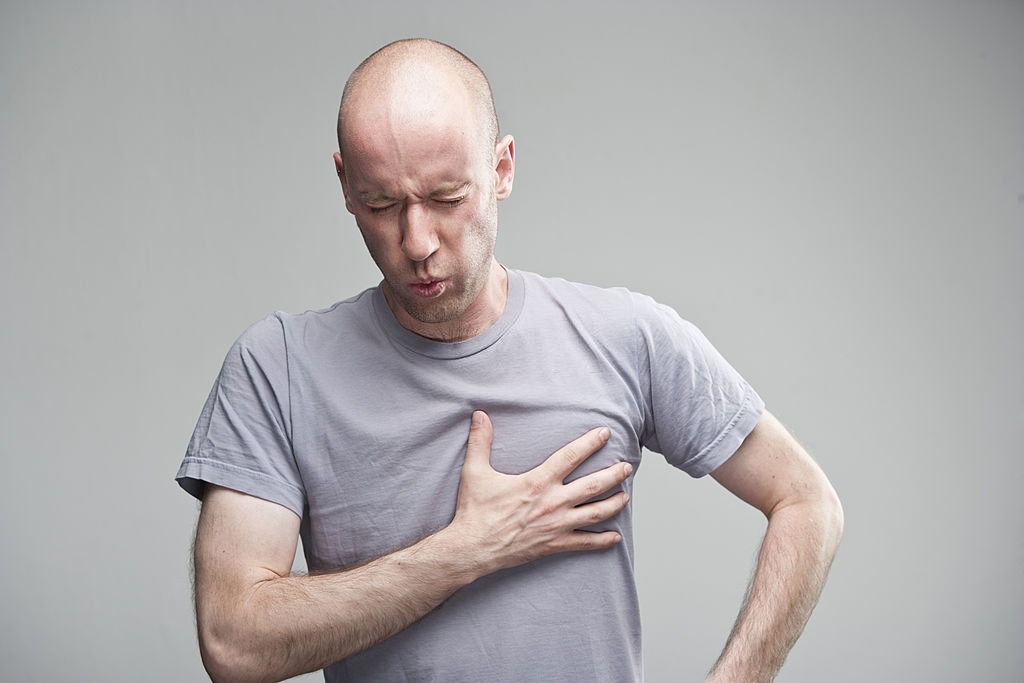The onset of atherosclerosis is generally explained by the lifestyle of contemporary societies, particularly in the West (junk food, sedentary lifestyle, etc.). Atherosclerosis is characterised by the presence of atheromatous plaques that invade the lumen of medium-sized and large arteries; these plaques contain lipids, inflammatory cells, smooth muscle cells and connective tissue; as they increase in size over time, these plaques lead to a reduction in the calibre of the artery. The consequence is a reduced blood supply to the cells and therefore a lack of cellular oxygen.
What are the risk factors for atherosclerosis?
High blood pressure :
High blood pressure can induce vascular inflammation via angiotensin II. Angiotensin II stimulates endothelial cells, vascular smooth muscle cells and macrophages to produce proatherogenic mediators, including pro-inflammatory cytokines, superoxide anions, thrombotic factors, growth factors and oxidised lectin-like LDL receptors.
Diabetes:
Diabetes leads to the formation of advanced glycation products, which increase the production of pro-inflammatory cytokines from endothelial cells. Oxidative stress and free radicals (oxygen generated in diabetes), however, directly damage the endothelium and promote atherogenesis.
Tobacco smoke:
Tobacco smoke contains nicotine and other chemicals that are toxic to the vascular endothelium. Smoking, including passive smoking, increases platelet reactivity (which can promote thrombosis) and plasma fibrinogen and haematocrit levels (increasing blood viscosity). Smoking also increases LDL and decreases HDL; smoking also stimulates vasoconstriction, which is particularly dangerous in arteries already narrowed by atherosclerosis.
Infections :
Infection with C. pneumoniae or other infections(viral, Helicobacter pylori) can cause endothelial dysfunction through direct infection, exposure to an endotoxin, or stimulation of systemic or subendothelial inflammation.
Chronic kidney disease:
This pathology promotes the development of atherosclerosis by several mechanisms, including aggravation of hypertension and insulin resistance; reduction in apolipoprotein A-I levels; and increases in lipoprotein (a), homocysteine, fibrinogen and C-reactive protein levels.
Heart transplantation :
This is often followed by accelerated coronary atherosclerosis, probably related to immune-mediated endothelial injury. Accelerated coronary atherosclerosis is also observed after thoracic radiotherapy and is probably the result of radiation-induced endothelial damage.
Some naturopathic advice to limit the risk factors for atherosclerosis
Diet :
-
Less saturated fatty acids :
A substantial reduction in saturated fats and refined and processed carbohydrates, and an increase in carbohydrates with fibre(fruit, vegetables) are recommended. These dietary changes are a prerequisite for lipid control and are essential for all patients. Excessive calorie intake must be limited if weight is to remain within normal limits.
-
No trans fats:
Small reductions in fat intake do not appear to reduce or stabilise atherosclerosis. Effective changes require limiting fat to 20 g/day, made up of 6 to 10 g of polyunsaturated fats with omega-6 (linoleic acid) and omega-3 (eicosapentaenoic acid, docosahexaenoic acid) fatty acids in equal proportions, ≤ 2 g of saturated fats and the rest in the form of monounsaturated fats. Trans fats, which are highly atherogenic, should be avoided.
-
Fewer refined carbohydrates:
Increasing carbohydrates to compensate for the reduction in saturated fats in the diet tends to increase plasma triglycerides and reduce HDL levels. Therefore, any calorie deficiency should be compensated by proteins and unsaturated fats rather than carbohydrates. Excessive intakes of fat and refined sugar should be avoided, particularly in people at risk of diabetes, although sugar intake is not directly linked to cardiovascular risk. Instead, consumption of complex carbohydrates(vegetables, whole grains) should be encouraged.
-
More fruit and vegetables:
Eating more fruit and vegetables (5 portions a day) appears to reduce the risk of coronary atherosclerosis, but it is not known whether this effect is due to nutritional factors or to the proportional reduction in saturated fat intake and the increase in fibre and vitamins. Phytochemical compounds called flavonoids (found in red and purple grapes, red wine, black tea and dark beer) appear to be particularly protective; regular consumption of red wine helps to explain why the incidence of coronary atherosclerosis in the French is relatively low, even though they smoke more and consume more fat than Americans.
-
More fibre:
Increasing fibre intake lowers total cholesterol and can have a beneficial effect on blood sugar and insulin levels. We recommend a daily intake of at least 5 to 10 g of soluble fibre(bran, beans, soya, psyllium), which lowers LDL levels by around 5%. Insoluble fibre(cellulose, lignin) does not appear to affect cholesterol levels, but may confer additional health benefits (lower risk of colon cancer, probably by stimulating intestinal peristalsis or reducing contact time with dietary carcinogens). However, too much fibre interferes with the absorption of certain minerals and vitamins. In general, foods rich in plant nutrients and vitamins are also rich in fibre.
-
Moderate alcohol :
Alcohol increases HDL and its antithrombotic, antioxidant and anti-inflammatory properties are poorly defined. These effects seem to be the same for wine, beer and spirits, and appear at moderate consumption levels; around 30 ml of ethanol (contained in an average of around 2 glasses of a usual alcoholic drink) 5 to 6 times a week protects against coronary atherosclerosis. However, in high doses, alcohol can cause major health problems. The relationship between alcohol and total mortality is J-shaped; mortality is lowest in men who drink < 14 drinks/week and women who drink < 9 drinks/week. People who consume large quantities of alcohol should reduce them. However, doctors are reluctant to recommend that non-drinkers start drinking alcohol, whatever the apparent protective effect.
Physical activity:
Regular physical activity(30 to 45 minutes of walking, running, swimming or cycling 3 to 5 times a week) consequently reduces the incidence of certain risk factors (hypertension, dyslipidaemia, diabetes), coronary heart disease, and death attributable to atherosclerosis in patients with or without a history of ischaemic events.
An aerobic exercise programme has a clear effect on preventing atherosclerosis and reducing weight. Before starting a new exercise programme, elderly people and those with risk factors for atherosclerosis or who have had recent ischaemic events should be examined by a doctor. The assessment includes a medical history, clinical examination and evaluation of the control of risk factors.
Are there medicinal plants to prevent atherosclerosis?
Borage oil
Borage oil is renowned for its anti-inflammatory properties, thanks to its inhibition of the arachidonic acid cascade. This action helps to reduce the risk of vascular and allergic accidents, while promoting cardiovascular protection and preventing atherosclerosis.
Caralluma
Caralluma is a plant which, as well as reducing food intake in a dose-dependent way, protects against oxidative stress. Its preventive action on atherosclerosis is reinforced by its positive impact on the blood lipid profile, making it an important ally in the prevention of cardiovascular disease.
Sesame seed oil
Sesame seed oil has antioxidant properties that help prevent atherosclerosis and other cardiovascular diseases. It also helps reduce the side effects of statins and promotes relaxation of blood vessels by activating the nitric oxide (NO) pathway.
Propolis
Propolis has a protective action against atherosclerosis, thanks to its antioxidant and anti-inflammatory properties, which help prevent the formation of atherosclerotic plaques and maintain vascular health.
Common Juniper essential oil
Common juniper berry essential oil has antioxidant and anti-hypercholesterolaemic activities, making it a potential agent in the prevention of atherosclerosis by reducing the risk of plaque forming in the arteries.
Mate
Mate is renowned for its anti-atheromatous properties, limiting the progression of atherosclerosis and helping to maintain cardiovascular health.
Dandelion
Dandelion has lipid-lowering and antioxidant effects, offering protection against the oxidative stress involved in the development of atherosclerosis.
In short, these medicinal plants offer a natural and complementary approach to the prevention of atherosclerosis, acting on different aspects of cardiovascular health and offering protection against the inflammatory and oxidative processes involved in this disease.
Olive bud :
Olive bud is also a valuable medicinal plant in the prevention of atherosclerosis. It is specifically recommended for the treatment of non-thrombotic cerebral atherosclerosis,diabetic arteritis and gangrene. Its therapeutic properties help to improve blood circulation, protect blood vessels and prevent the formation of atherosclerotic plaque, thereby reducing the risk of complications associated with atherosclerosis.
Medical literature and clinical trials:
- White J, Swedlow DI, Preiss D, et al; Association of lipid fractions with risks for coronary artery disease and diabetes, 2016
- Emerging risk factors collaboration, Eroquo S, Kaptoge S, Perry PL, et al ; Lipoprotein(a) concentration and the risk of coronary heart disease, stroke, and nonvascular mortality, 2009
- Thanassoulis, G, Campbell CY, Owens DS, et al for the CHARGE Extracoronary Calcium Working Group : Genetic associations with valvular calcification and aortic stenosis, 2013
- Nordestgaard BG, Chapman MJ, Ray K, et al and the European Atherosclerosis Society Consensus Panel: Lipoprotein(a) as a cardiovascular risk factor: current status, 2010
- Kamalakkannan S, Rajendran R, Venkatesh RV, Clayton P, Akbarsha MA. Antiobesogenic and Antiatherosclerotic Properties of Caralluma fimbriata Extract. J Nutr Metab, 2010
- Kamalakkannan S, Rajendran R, Venkatesh RV, Clayton P, Akbarsha MA. Effect of Caralluma Fimbriata Extract on 3T3-L1 Pre-Adipocyte Cell Division, 2011
- Hsu E, Parthasarathy S. Anti-inflammatory and Antioxidant Effects of Sesame Oil on Atherosclerosis: A Descriptive Literature Review. Cureus, 2017
- Tian H, Sun H, Zhang J, Zhang X, Zhao L, Guo S, Li Y, Jiao P, Wang H, Qin S, Yao S. Ethanol extract of propolis protects macrophages from oxidized low density lipoprotein-induced apoptosis by inhibiting CD36 expression and endoplasmic reticulum stress-C/EBP homologous protein pathway. BMC Complementary and Alternative Medicine 2015
- Akdogan M, Koyu A, Ciris M, Yildiz K. Anti-hypercholesterolemic activity of Juniperus communis Lynn Oil in rats: A biochemical and histopathological investigation. Biomedical Research (2012)
- Gumral N, Kumbul DD, Aylak F, Saygin M, Savik E. Juniperus communis Linn oil decreases oxidative stress and increases antioxidant enzymes in the heart of rats administered a diet rich in cholesterol. Toxicol Ind Health. 2015
- Mosimann AL, Wilhelm-Filho D, da Silva EL. Aqueous extract of Ilex paraguariensis attenuates the progression of atherosclerosis in cholesterol-fed rabbits. Biofactors. 2006
- Choi UK, Lee OH, Yim JH, Cho CW, Rhee YK, Lim SI, Kim YC. Hypolipidemic and antioxidant effects of dandelion (Taraxacum officinale) root and leaf on cholesterol-fed rabbits. Int J Mol Sci. 2010





